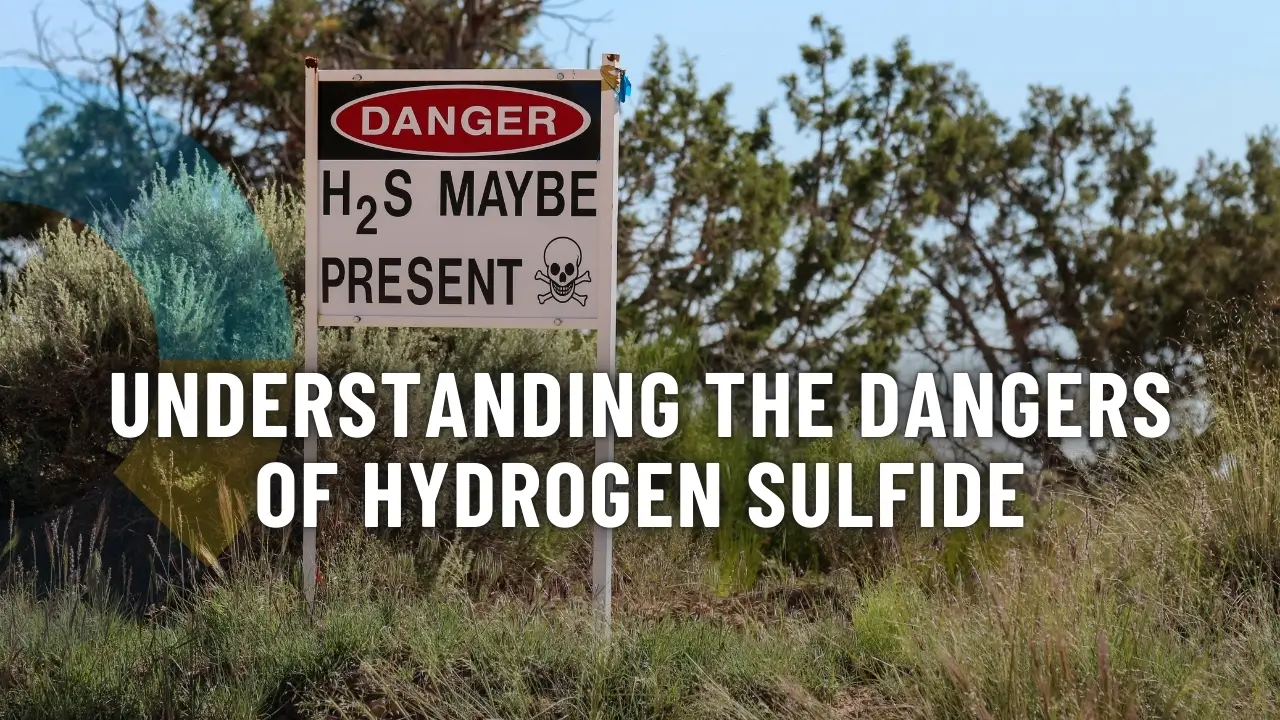The Hidden Threat of Hydrogen Sulfide: A Complete Guide
Hydrogen sulfide (H2S) is a toxic gas that poses significant environmental and human health risks. This colorless, flammable gas has a distinct, foul odor reminiscent of rotten eggs and is commonly found in industrial settings, such as wastewater treatment plants, petroleum refineries, and agricultural facilities. The Occupational Safety and Health Administration (OSHA) has published a comprehensive guide on H2S, detailing the hazards associated with this gas and the necessary precautions to ensure worker safety. In this blog post, we will discuss the key takeaways from OSHA’s publication on hydrogen sulfide.
H2S: Sources and Hazards
Hydrogen sulfide is primarily produced through the natural decay of organic materials and as a byproduct of various industrial processes. Some common sources of H2S include:
- Sewage treatment facilities and wastewater pumping stations
- Petroleum refineries and natural gas processing plants
- Pulp and paper mills
- Agricultural facilities that handle manure storage and processing
H2S is both highly toxic and highly flammable, making it a significant hazard in the workplace. When inhaled, even in small concentrations, it can cause severe health effects, including respiratory irritation, dizziness, nausea, and even death. Prolonged exposure to H2S can lead to more severe conditions, such as pulmonary edema, chronic bronchitis, and other long-term respiratory issues.
Detection and Monitoring of H2S
Knowledge related to hydrogen sulfide safety can prevent severe injuries and potentially save lives. Detecting H2S is essential to prevent exposure and ensure worker safety. While the gas has a distinct odor, relying solely on smell is not an effective method of detection, as high concentrations of H2S can cause olfactory fatigue, rendering the sense of smell ineffective. Instead, employers must implement continuous monitoring systems that detect and alert workers of H2S presence.
These hydrogen sulfide gas safety systems should be capable of detecting H2S concentrations as low as 10 parts per million (ppm), the threshold for permissible exposure limits set by OSHA. Alarms should be triggered at 10 ppm to indicate the presence of H2S and again at 15 ppm to signal an evacuation. Employers must also provide workers with personal monitoring devices to ensure their individual safety.
Protective Measures and Engineering Controls
To minimize the risk of H2S exposure, employers must implement several protective measures and engineering controls. The following actions must be taken to ensure the implementation of hydrogen sulfide safety:
- Installing ventilation systems to ensure proper airflow and reduce H2S concentrations in enclosed spaces.
- Implementing procedures for safely handling, storing, and disposing of materials containing H2S.
- Conducting regular inspections and maintenance of equipment to prevent leaks and equipment failure.
- Developing and enforcing standard operating procedures for entering confined spaces where H2S may be present.
Personal Protective Equipment (PPE)
In addition to engineering controls, workers must be provided with appropriate personal protective equipment (PPE) to minimize the risk of exposure and avoid the dangers of hydrogen. This includes:
- Respiratory protection: Workers must be provided with appropriate respirators and cartridges for protection against H2S exposure. Employers must also ensure proper fit testing and training in the use and maintenance of respiratory equipment.
- Eye and face protection: Safety goggles or face shields should be worn to protect against eye irritation from H2S exposure.
- Protective clothing: Depending on the concentration of H2S, workers may require chemical-resistant clothing to prevent skin irritation and burns.
Training and Emergency Response
It is essential that employees working in areas with potential H2S exposure receive proper training on the hazards, detection methods, and protective measures associated with the gas. They should also be educated on emergency response procedures, including evacuation plans and first aid measures for H2S exposure victims. Employers should conduct periodic drills to ensure that employees are familiar with emergency protocols and can respond effectively in the event of an incident.
Training should cover the following topics:
- Properties and characteristics of H2S, including its sources and hazards.
- Detection and monitoring methods, such as the use of continuous monitoring systems and personal monitoring devices.
- Proper use and maintenance of personal protective equipment (PPE).
- Engineering controls and protective measures to minimize exposure risk.
- Emergency response procedures, including evacuation plans, first aid measures, and incident reporting.
Rescue and First Aid Measures
In the event of H2S exposure, it is crucial that employers have a well-defined rescue plan and trained personnel to execute it. Workers should be educated on first aid measures for H2S exposure, including:
- Removing the victim from the contaminated area and ensuring their own safety while doing so.
- Administering 100% oxygen, if available, to assist the victim’s breathing.
- Calling emergency medical services and providing information on the nature of the exposure.
- Continuously monitoring the victim’s condition until medical help arrives.
Conclusion
Hydrogen sulfide is a dangerous gas that poses significant risks to human health and the environment. To ensure the safety of workers in industries where H2S exposure is a potential hazard, employers must implement comprehensive safety measures, including monitoring and detection systems, engineering controls, personal protective equipment, and proper training. By following the guidelines set forth by OSHA, employers can protect their workforce from the dangers of hydrogen sulfide and create a safer work environment.





